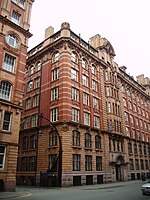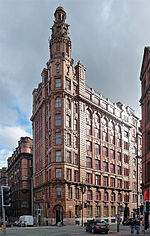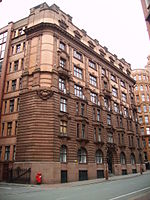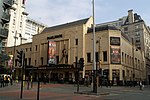Whitworth Street

Whitworth Street is a street in Manchester, England. It runs between London Road (A6) and Oxford Street (A34). West of Oxford Street it becomes Whitworth Street West, which then goes as far as Deansgate (A56). It was opened in 1899 and is lined with many large and grand warehouses. It is named after the engineer Joseph Whitworth, whose works once stood along the route. Whitworth Street West runs alongside the viaduct connecting Oxford Road and Deansgate railway stations: beyond Albion Street the Rochdale Canal is on the northern side. On the Albion Street corner is the building once occupied by the Haçienda nightclub at nos. 11–13, as well as the Twisted Wheel Club at no. 6 , while further west on the opposite side is the Ritz. Opposite the Sackville Street Building is Sackville Gardens, a public park established in 1900.
Excerpt from the Wikipedia article Whitworth Street (License: CC BY-SA 3.0, Authors, Images).Whitworth Street
York Street, Manchester City Centre
Geographical coordinates (GPS) Address Nearby Places Show on map
Geographical coordinates (GPS)
| Latitude | Longitude |
|---|---|
| N 53.475 ° | E -2.239 ° |
Address
York Street Manchester
York Street
M1 7DF Manchester, City Centre
England, United Kingdom
Open on Google Maps










